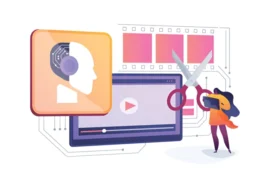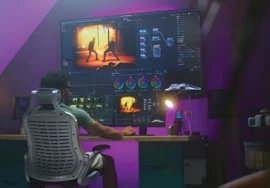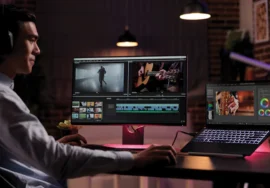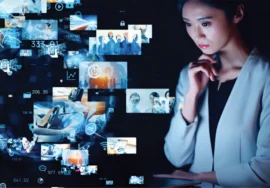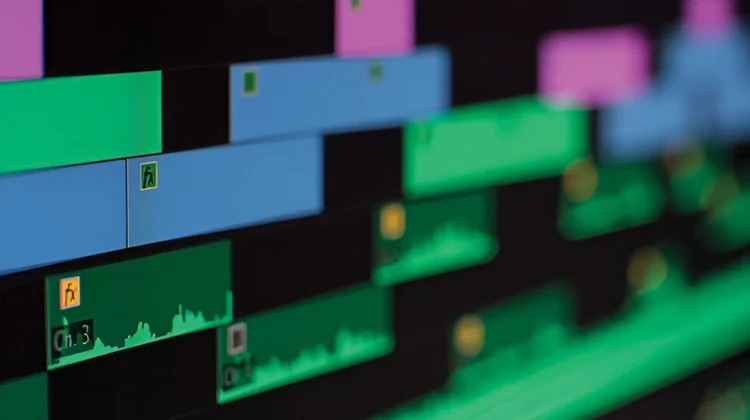
Advanced Video Editing: Layers and Compositing – A Comprehensive Guide
Ready to push the boundaries of video editing? Look no further than layers and compositing. These powerful techniques unlock a world of creative possibilities, empowering you to craft stunning and impactful content. This in-depth guide delves into the world of layers and compositing, equipping you with the knowledge and steps to elevate your video editing.
Demystifying Layers and Compositing
Imagine your editing software as a digital artist’s studio. Layers act like transparent sheets of acetate stacked one upon another. Each layer can hold video clips, images, graphics, text, and more. Compositing refers to the art of combining these elements in different layers to create a unified, ultimate image.
The Power of Layers and Compositing
The applications of layers and compositing are vast and extend far beyond basic editing:
Visual Effects (VFX): Craft awe-inspiring special effects by compositing elements. Think of creating realistic explosions, adding fantastical creatures, or integrating weather phenomena into your scenes.
Motion Graphics: Design dynamic and animated titles, intros, outros, and lower thirds that elevate your production value. Layers give unparalleled control over animation and visual storytelling.
Green Screen/Blue Screen Magic: Replace a colored background (green or blue) with another image or video to achieve seamless compositing. Imagine transporting your interview there to a bustling cityscape or a tropical paradise!
Precise Color Correction and Grading: Isolate specific elements within your scene and apply color adjustments on dedicated layers without affecting the overall footage. This meticulous approach ensures color consistency and cinematic aesthetics.
Fine-tuning details: Layers enable precise editing of intricate scenes. Isolate a specific object or individual on a separate layer for focused edits, allowing you to refine details with surgical precision.
The Benefits of Layering and Compositing
The advantages of incorporating layers and compositing into your editing workflow are significant.
Enhanced Creative Control: Layers offer a non-destructive editing approach. Experiment and make adjustments without fear of damaging the original footage. This flexibility empowers you to explore creative avenues and achieve the desired visual impact.
Superior Organization: Complex projects become more manageable by compartmentalizing elements into distinct layers. This structured approach streamlines editing and facilitates easy access to specific components for adjustments.
Increased Efficiency: Edit individual aspects of your video without affecting others. This targeted approach saves valuable time and simplifies the editing process. Compositing allows you to build your video scene by scene, layer by layer, with exceptional efficiency.
Stepping into the World of Layers and Compositing
Most non-linear editing (NLE) software offers robust layering capabilities. Popular options include Adobe After Effects, Premiere Pro, Blackmagic Design, DaVinci Resolve, and Final Cut Pro. While the specific functionalities might differ across these programs, the core principles of layering and compositing stay consistent.
Getting Started: A Practical Guide
Here’s a roadmap to guide you on your journey towards mastering layers and compositing:
Embrace the Layering System: Immerse yourself in understanding how your editing software manages layers. This includes adding, deleting, arranging layers within the stack, and applying effects specifically to individual layers. Explore the user guides, tutorials, and online resources provided by your software developer.
Experiment with Basic Compositing Techniques: Dive right in and start experimenting with fundamental compositing techniques. Try green screen compositing by replacing a green background with an entirely different video or image. Superimpose images to create a picture-in-picture effect, or isolate and color-correct specific elements within a complex scene.
Explore Tutorials and Resources: There’s a wealth of online tutorials and resources dedicated to mastering the art of compositing. Utilize these resources to refine your skills and learn advanced techniques. Platforms like YouTube offer countless video tutorials on specific compositing workflows and software functionalities. Websites dedicated to video editing often provide in-depth articles and guides on compositing techniques.
Advanced Compositing Techniques: Unveiling the Secrets
Having mastered the basics of layers and compositing, it’s time to delve deeper and unlock the true creative potential of these techniques. This section explores advanced compositing approaches that will elevate your video editing to a professional level.
Keying Finesse: Beyond Green Screen
While green screen/blue screen (chroma keying) is a powerful compositing tool, advanced keying techniques offer even greater control and flexibility:
Luma Keying: This technique isolates elements based on their brightness or luminosity. It’s particularly useful for compositing elements with translucent or transparent properties, such as smoke, fire, or glass.
Spill Suppression: Chroma keying can sometimes suffer from “color spill,” where unwanted green or blue hues contaminate the foreground object. Advanced keying tools offer spill suppression features to overcome this issue, resulting in cleaner compositing results.
Advanced Chroma Keying: Explore the various parameters within chroma keying tools. Fine-tune settings like color range, feathering, and edge softness to achieve a precise and natural-looking composite.
Rotoscoping: The Art of Precise Isolation
Rotoscoping is an animation technique where artists meticulously trace around moving objects frame by frame. In compositing, rotoscoping allows you to isolate specific moving objects from their background for seamless integration into other scenes. This technique is particularly valuable for:
Character Compositing: Rotoscope characters from live-action footage and integrate them into animated sequences or entirely different backgrounds.
Object Removal: Unwanted elements within a scene can be meticulously rotoscoped and removed, creating a clean slate for compositing.
Special Effects: Rotoscope complex elements like fire, explosions, or water for enhanced control over their compositing.
Tracking and Masking: A Powerful Duo
Tracking: Imagine having the ability to “lock on” to a specific object within your footage. Tracking allows you to follow the movement of an object across multiple frames, creating a smooth and realistic composite. This is crucial when compositing elements that need to interact with moving objects in the background.
Masking: While tracking focuses on object movement, masking allows you to define a specific area within a layer for targeted compositing effects. This technique is perfect for:
Selective Color Correction: Isolate specific elements within a scene using masks and apply color adjustments independently, without affecting the surrounding area.
Partial Compositing: Apply compositing effects only to designated areas within a layer using masks. This allows for creative blending of elements and subtle compositing transitions.
Motion Blur and Time Remapping: Adding Realism
Motion Blur: In real life, objects in motion exhibit a slight blur due to the camera’s exposure time. Incorporating motion blur into your composite shots significantly enhances realism. By applying motion blur to the foreground element based on its tracked movement, you create a seamless integration with the background scene.
Time Remapping: This technique manipulates the speed of footage. You can use time remapping to slow down specific actions within your composite for dramatic effect or speed up a sequence to enhance dynamism.
Advanced Compositing Workflows:
Mastering these techniques unlocks the potential for complex compositing workflows:
3D Compositing: Integrate 3D elements seamlessly into your video by compositing them with live-action footage. This allows for the creation of realistic environments, characters, and special effects.
Depth of Field Compositing: Simulate the depth of field effect, where foreground elements appear sharp, and the background is progressively blurred. This technique adds depth and realism to your composite shots.
Particle Systems: Create dynamic effects like smoke, fire, or explosions using particle systems. These systems generate and animate thousands of tiny particles, allowing for realistic and visually engaging composites.
Remember: Mastering advanced compositing takes time, practice, and experimentation. Don’t be afraid to explore, push boundaries, and learn from online resources and tutorials. With dedication and these techniques at your disposal, you’ll be well on your way to crafting awe-inspiring and visually stunning video content.

